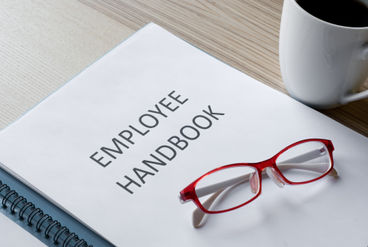
Don't Get Stuck with OSHA Violations
Posted on 02/27/20 By Lorman Team
Occupational Safety and Health Administration (OSHA) violations can vary from one business to another, but for all businesses, workplace safety is paramount. OSHA violations, penalties, and fines can be costly for your business.
The Occupational Safety and Health Administration, or OSHA, oversees workplace safety in the U.S. Companies and workplaces are inspected periodically to identify violations of OSHA codes. If violations are found, the employer must correct the problem by the deadline or request a conference with OSHA to discuss the violations.
Employee safety complaints can also result in OSHA inspections. It is important for the employer to involve employees in workplace safety and to respond appropriately to complaints.
The best way to avoid OSHA violations is to be proactive about safety, record keeping, and responding to safety issues.
OSHA Violations in 2020
There are six levels of OSHA violations. These range from minor violations, which have little or no impact on health or safety, to violations involving a high risk of injury or death.
- De minimis violations
- Other-than-serious violations
- Serious violations
- Willful violations
- Repeated violation
- Failure to abate prior violation
In January 2020, OSHA increased civil penalties for violations by approximately 1.8%. Other changes to expect in 2020 include a Request for Information (RFI) concerning potential updates to the standards for mechanical power presses and powered industrial trucks.
OSHA will also analyze the response to an RFI concerning lock-out/tag-out practices and exposure to crystalline silica. It also seeks to clarify the requirements for stair rail systems.

Reduce the Chance of an OSHA Violation and Minimize Penalties
Understand PPE requirements
Missing or inadequate PPE (personal protective equipment) is a frequent violation. Many businesses simply fail to provide PPE, including protective glasses, gloves, footwear, or face masks, to protect workers from injuries or exposure to dangerous substances. In some cases, there are changes in the way employees work, and these may require changes in PPE use. Understanding the specific PPE requirements for your business, providing the necessary PPE, and making sure employees are trained to use it correctly can greatly reduce violations and the resulting fines.
Be aware of hazardous energy
Statistics show that approximately 3 million workers use service equipment, which may expose them to hazardous energy. Proper lockout/tagout procedures are essential for protecting employees. Lock and tag safeguard employees by making sure that machines are properly shut off and stay shut off during maintenance or repairs. Educating and training employees in these procedures keeps them safe and the business OSHA compliant.
Keep up with inspections and maintenance
Regular inspections and proper maintenance are important for many reasons. It reduces the risk for employee injuries and also keeps everyone aware of the status and condition of tools, machinery, and equipment.
Maintain accurate records
It is vitally important to keep complete and accurate records. Employers need to be aware of workplace injuries and illnesses, which may help them improve workplace safety. Gaps in the record of work-related injuries or illnesses may result in a full safety audit. Well maintained documentation is a critical line of defense if there is an OSHA inquiry or violation. If your records are incomplete, take the time to correct and update them before they are needed.
Enforce safety regulations
Training employees about safety regulations is the first step, but if the rules are disregarded, employers must consistently enforce them. It is helpful to establish a policy for disciplinary action in advance of a problem so that employees are aware of the consequences if they disregard safety regulations.
Keep a checklist
It's not easy to keep track of all of the applicable OSHA regulations. A simple checklist can help keep your business compliant. Start by fixing any routine violations. Some safety issues can be fixed easily and economically, such as inadequate storage of flammable liquids. Small problems can accumulate and become big problems if they are not addressed. In the event of an injury, do not delay. Report it quickly and completely.

Most Common OSHA Violations and Fines
The preliminary list of OSHA's Top 10 violations for the fiscal year 2019 remained the same as the 2018 list, with the exception of Lockout/Tagout, which moved to fifth place to fourth. According to the National Safety Council, the ten most common OSHA violations were:
- Fall Protection – General Requirements (1926.501): 6,010 violations
- Hazard Communication (1910.1200): 3,671
- Scaffolding (1926.451): 2,813
- Lockout/Tagout (1910.147): 2,606
- Respiratory Protection (1910.134): 2,450
- Ladders (1926.1053): 2,345
- Powered Industrial Trucks (1910.178): 2,093
- Fall Protection – Training Requirements (1926.503): 1,773
- Machine Guarding (1910.212): 1,743
- Personal Protective and Lifesaving Equipment – Eye and Face Protection (1926.102): 1,411
OSHA Training and Certification
Lorman offers OSHA training and certification courses that can help keep your business compliant and minimize employee hazards. Failure to monitor and correcting potential violations can lead to substantial OSHA fines.
Related Articles
Training is vital in the compliance of HIPAA for healthcare providers and business associates to ensure the guaranteed privacy and security of patients’ health information.
An employee handbook refers to a company manual given to employees by an employer; and chances are, you need a guide on how to write an effective, compliant handbook that covers office rules, like drug use, dress code, and performance expectations.
Ensuring the safety of your warehouse workers and managing warehouse stock can be challenging. Here are some best practices for warehouse safety and effectively managing stock.
.png)

